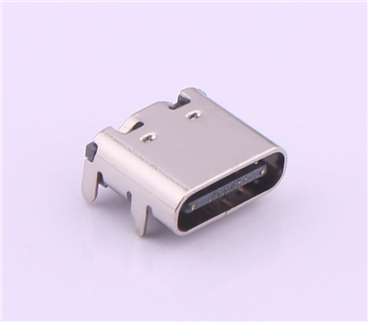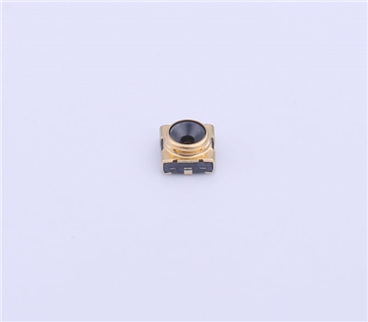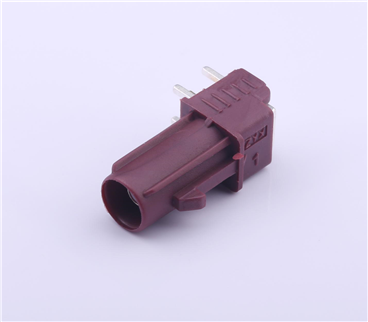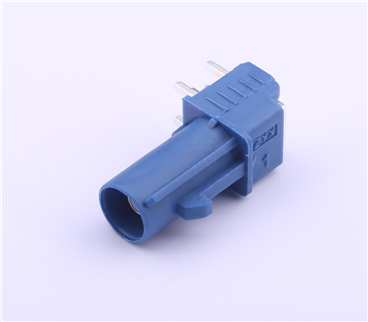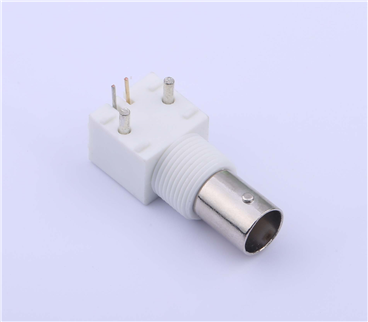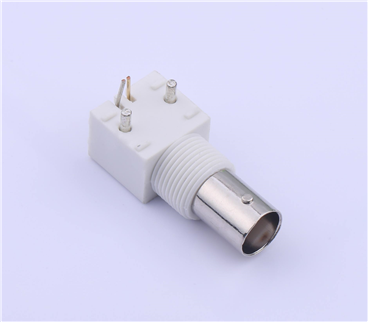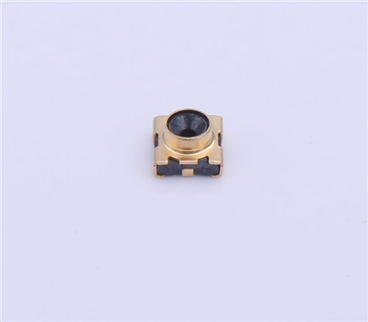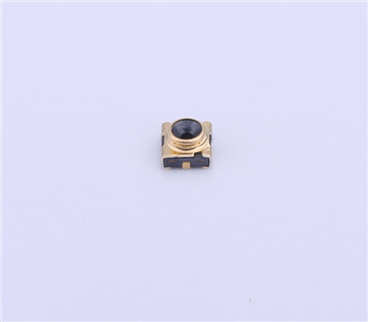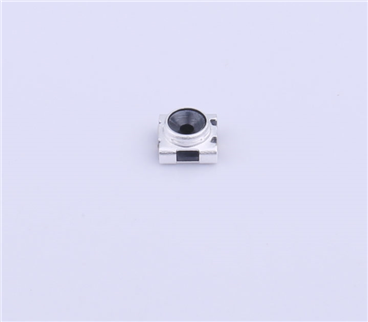The Wi-Fi FEM track has been in business for two years. Looking back, there are more than 20 domestic Wi-Fi FEM manufacturers.
The Wi-Fi FEM track, which was not very optimistic before, now attracts many RF chip companies to chase. When the wind of the market and the wind of capital blow together, the Wi-Fi FEM track has become a hot spot.
Whether it is Wi-Fi FEM, the entire RF chip, or even the entire domestic chip industry, merger is the only way out. Although the opportunities for chip entrepreneurship are good, with too much competition, mergers are inevitable. Entrepreneurship is a process in which entrepreneurs optimize and integrate the resources they own or can have through their efforts, thereby creating greater economic or social value. Merger is also the optimization and integration of resources. Chip entrepreneurship is not only for creating wealth, but also for a Chinese chip.
The emergence of Wi-Fi FEM stems from the emergence of wireless routers. Wi-Fi FEM includes PA, LNA and Switch for wireless signal transmission and reception. The PA acts as a signal transmitter and amplifier, the LNA acts as a signal receiver amplifier, and the Switch acts as a signal transmitter and receiver switch.
Since the birth of the first generation of wireless router products in 1997, their basic shapes are almost the same. Cisco (cisco), an international network equipment manufacturer, launched the first wireless router.
With the continuous development of network technology, the second and third generation wireless WIFI networks have been born one after another. At the same time, after Cisco, a series of domestic and foreign manufacturers such as D-Link, Huawei, and TP-Link have emerged. The performance of wireless routers A leap forward has been achieved.
It was around 2009 that domestic wireless routers really went to thousands of households. On the one hand, notebook computers began to be equipped with wireless network cards, and people realized the convenience of WIFI links; on the other hand, it was due to the birth of 11n wireless routers.
Wi-Fi 4 was defined in 2008, the protocol it uses is 802.11n, and the maximum single-stream bandwidth is 150Mbps; Wi-Fi 5 was defined once in 2013 and 2016, respectively, and the protocol used in 2013 was 802.11ac. The maximum streaming bandwidth is 433Mbps. The protocol defined in 2016 is also 802.11ac, but the maximum single-stream bandwidth is increased to 867Mbps; Wi-Fi 6 is defined in 2018. The protocol it uses is 802.11ax, and the single-stream bandwidth can reach up to 1201Mbps. .
In 2011, the Shanghai Institutes for Advanced Study of the Chinese Academy of Sciences and the Beijing Institute of Microelectronics of the Chinese Academy of Sciences started the research and development of the Wi-Fi 4 FEM project at the same time. After three years, the project was stopped and the team disbanded. Most of the R&D personnel of these two teams converge on RDA.
In 2013, Leixunke became the first chip startup company in China to develop Wi-Fi FEM.
In 2014, Kangxi Communication was established. It gathered talents from all over the world in the early days. By coincidence, it entered the GaAs Wi-Fi FEM track. After years of continuous research and development and polishing, it has become a domestic Wi-Fi FEM leader.
In 2015, RDA learned from the industry that the shipment of gallium arsenide wafers for Wi-Fi FEM is very large, second only to mobile phone PA. Surprised, RDA decided to form a team and develop Wi-Fi FEM, recruiting the earliest talents to develop Wi-Fi FEM from the market. In 2017, RDA 2.4G FEM and 5.8G FEM entered mass production, becoming the first domestic company to mass-produce and import many benchmark customers in China.
In 2017, Weijie Chuangxin, Feixiang Technology and Zhuoshengwei saw the launch of Wi-Fi FEM products by RDA, and also established a Wi-Fi FEM R&D project team. In the same year, Yuzhen is also developing Wi-Fi FEM. In 2018, it launched 5.8G FEM, which entered major domestic customers and delivered in mass production.
At the end of 2018, Sanwuwei was established, focusing on the research and development of Wi-Fi FEM. Core Baxter was also established in the same year.
The reasons for the outbreak of domestic Wi-Fi FEM
In 2018, the industry and investors' perception of Wi-Fi FEM was still in the niche market. They believed that the market space was small and the technical content was not high. It was easy for mobile phone PA companies to make this product incidentally. Time gives the answer, especially the technical difficulty of Wi-Fi 6 FEM is no less than that of 5G PA, but the complexity of the module is not as good as that of 5G PA. In terms of Wi-Fi 6 FEM technology, the gap between domestic manufacturers and international manufacturers is at least 3 years.
The outbreak of domestic Wi-Fi FEM began in 2020, and more and more companies entered the Wi-Fi FEM track, all wanting to take a share. There are three reasons:
The market outlook is optimistic
On February 13, 2020, Xiaomi founder, chairman and CEO Lei Jun officially released the annual flagship Xiaomi Mi 10, introduced that Xiaomi Mi 10 is equipped with Wi-Fi 6 technology, and released the first Xiaomi AIoT router AX3600 supporting Wi-Fi 6 together. The price is 599 yuan. Since then, Wi-Fi 6 FEM has been completely brought on fire.
Before the rise of Wi-Fi 6 FEM, the market demand for Wi-Fi 4 FEM and Wi-Fi 5 FEM is also great, and they are used in routers, mobile phones and IoT terminals. The target market is not obvious enough, and the fragmented market is too fragmented, so it is not concerned by the industry, but the annual revenue of international RF chip companies in this segment exceeds 10 billion yuan.
According to Yole's forecast, from 2019 to 2025, the consumption of GaAs wafer 6" will maintain a compound annual growth rate of 4%, and the demand for wafers will increase from 744,000 pieces/year to 941,000 pieces/year.
Industry organizations estimate that mobile phone PAs have the largest demand for gallium arsenide wafers, accounting for 57%, and the wafer consumption in 2020 will be 459,000 pieces. In addition to mobile phone PA, mobile phone Wi-Fi PA and router Wi-Fi PA consume 26.5% of GaAs wafers, and the wafer consumption in 2020 will be 212,000.
Yole predicts that the Wi-Fi FEM market will exceed US$3 billion in 2025, or about 20 billion RMB.
Few design and development talents needed
Wi-Fi FEM companies do not need too many chip design and R&D talents. At present, there are no more than 7 chip design and R&D talents in domestic Wi-Fi FEM companies, and it can even be said that there are no more than 5. The chip research and development of RF front-end companies is originally a battle of elites, and the R&D talents of Wi-Fi FEM products are even more elite confrontation among elites.
Thousands of soldiers are easy to get, but one general is hard to find. This is the case with Wi-Fi FEM design and R&D talents. Wi-Fi FEM R&D relies on generals, not soldiers, but on hard work and thinking on the front line of R&D, as well as continuous learning and improvement.
At a glance, there are more and more Wi-Fi FEM companies, and more and more people are doing the design and development of Wi-Fi FEM. In fact, people who can make products and do them well are extremely scarce.
For RF front-end chips, if the person is wrong, the product is wrong, and the company has no chance. Although it seems that there are few design and R&D talents needed to do Wi-Fi FEM, anyone can do it, but in fact it is not, time will give the answer in the end.
Relatively small funding requirements
From a business perspective, doing Wi-Fi FEM is a good business. Small investment, large output.
In terms of capital requirements, starting a business as a Wi-Fi I main chip starts at 100 million, and it will only have a chance to see hope after several billion. The capital requirement for mobile 5G PA is also much larger than that of Wi-Fi FEM. Now, domestic mobile phone PAs have burned several hundred million to reach the door of listing. However, if a professional team does WIFI FEM and burns 100 million yuan, it will be able to touch the door of listing, and the annual sales will reach several hundred million yuan.
The reason for the relatively small capital requirements for Wi-Fi FEM is that the product technical requirements are high, but the product is not complicated, the company does not need too many people, and the production and operation are relatively simple. Of course, Wi-Fi FEM products are not like RF switches. It is easy to be accepted by customers today, and easy to be kicked out by customers tomorrow. Wi-Fi FEM products have requirements for debugging and circuit matching, so a project will not be easily rejected. replace. Making Wi-Fi FEM relies on technology, and making RF switches relies on operating and maintaining key customer relationships.
Domestic Wi-Fi FEM merger is inevitable
Recently, the founder of a domestic Wi-Fi FEM company talked to me about a few points. These views are also very representative in the domestic chip industry:
1. The gross profit of domestic chips is low, unlike the high-tech industry
What is high technology? High-tech is a kind of frontier science and technology that is talent-intensive, knowledge-intensive, technology-intensive, capital-intensive, risk-intensive, information-intensive, industry-intensive, highly competitive and permeable, and has a significant impact on the development and progress of human society. The "high" of high-tech is relative to conventional technology and traditional technology, so it is not a static concept, but has a historical, developmental and dynamic nature. Today's high technology will become tomorrow's conventional technology and traditional technology.
Domestic chips are in a special historical period, from scratch, from domestic substitution to world leadership. After more than ten years of development, domestic low-end chips have become conventional chip products. There are many people and companies that can do it. Competition and bargaining are fierce. Competition determines the price. With the empowerment of investors, there is no profit or even loss. A company will do it.
In addition, the domestic chips of many tracks are on the same starting line. When the top three of each track are not obvious enough, startups and investors feel that they have a chance. A brutal technology competition, product competition, and market competition will exist for a long time until merger or elimination, and the industry returns to normal. This process will surely make the company that persists on this track strong and become a rising star. If you want to wear a crown, you must bear its weight; if you want to hold a rose, you must endure its pain. Entrepreneurs in China are all unbeatable little powerhouses, and it is not easy to persevere until the end to win.
High product margins are just one of the characteristics of high-tech products. If the technical content of the product is high, and the product technology is continuously upgraded and iterative, it is just that there are too many companies making this product at the same time, and they are in a process of common advancement and elimination. Even if the gross profit of chip products is low, it belongs to high-tech products and high-tech industries. For example, Weijie Chuangxin, even if the gross profit in 2020 is only 18.12%, its products and technologies are definitely the representatives of high-tech in China.
2. Large investment, small income
To be precise, the investment in research and development of chips is large, and the short-term benefits are small, but the long-term benefits are large.
According to statistics, the average time for listed domestic chip companies to go public is 8 years, which can be described as a sword of ten years. People or institutions who invested in the chip industry in the early stage have already made so much money that some investors lamented that there is no one who does not make money in chip investment.
Doing chips and chip investment cannot only be short-term thinking, but insist on doing difficult and correct things. It is difficult to produce simple general-purpose chips on the market, whether it is entrepreneurship or investment, and it is difficult to achieve good results. The domestic chip industry should encourage innovation and technological breakthroughs. Because you can't see the long-term, and because you keep invoking, you will feel that the investment is large and the income is small.
But there is one thing that should attract the attention of the industry. The domestic chip industry no longer has the advantage of labor costs, which is higher than that of Taiwan and South Korea, and is close to Japan, Europe and the United States. If our technical capabilities and product output cannot keep up with international manufacturers, in the long run, domestic chips will not be able to compete with foreign manufacturers. That's really big investment and little benefit.
The amount of chip investment is getting larger and larger, ranging from tens of millions to hundreds of millions. The founder of the Wi-Fi FEM company couldn't help but wonder, many chip companies are making low-end chip products, burning hundreds of millions, and the company is still losing money. He repeatedly asked himself, wouldn't it be fragrant to spend so much money on other products? I can't make money in any business, so I have to do chips?
3. Domestic chip companies are more suitable for market talents as leaders
This point of view needs to be discussed. It depends on the technology and products. For the most cutting-edge technologies and products, it is more suitable for technical talents to be the company leaders.
For a fully competitive track and product, and the iteration speed of technology and product is not very fast, it is more beneficial for market talents who understand technology to be the person in charge of the company.
Taking Wi-Fi FEM as an example, in the field of RF front-end chips, Wi-Fi FEM is a segmented track, but entering the Wi-Fi FEM track, there are many market segments below, router market, mobile phone market, IoT market . Products can have many subdivisions, high power, medium power, and low power. There are good opportunities in each segment, but those who have not been in this market for a long time cannot accurately grasp it. Therefore, domestic Wi-Fi FEM companies only see the most conspicuous subdivisions on the Wi-Fi FEM track, and they are all making the same two products, and the final result is self-evident.
If you really study the market and customer needs, you will find that there are many technologies and products worth doing. Customer demand-oriented technology and product innovation is the real way out for chip startups.
4. Domestic small and medium chip companies can survive and develop only through mergers and expansion
Before meeting the founder of the Wi-Fi FEM company, Sanwuwei had completed its first merger. Domestic small and medium-sized chip companies will face the same challenges in the supply chain and large clients. The company is small in scale and has a single product. The effective utilization of supporting team resources other than R&D is not high, but it is not perfect, and mergers are inevitable.
Chunjiang Plumbing Duck Prophet, Sanwuwei team and Dr. Gu Jiangmin's Wi-Fi FEM entrepreneurial team have merged, which is also the first merger of the domestic Wi-Fi FEM track. Dr. Jiangmin Gu graduated from University of Science and Technology of China, majoring in microelectronics. After obtaining a master's degree from University of Science and Technology of China, he then obtained a doctorate degree in integrated circuits from Nanyang Technological University, Singapore. He used to do chip design and development in Singapore's Avago company. After returning to China, he taught at Soochow University for many years. He has published more than 30 SCI articles and has many domestic and foreign invention patents.
There is a consensus gradually forming that domestic small and medium chip companies can survive and develop only through mergers and expansion. With the support and assistance of capital, the merger of more companies or teams will occur, and the domestic Wi-Fi FEM track will be full of hope.
The development of China's chip industry is not short of market, not short of money, but lack of talents. More than 20 chip companies have come to do Wi-Fi FEM, indicating that the Wi-Fi FEM track is very promising. More than 20 chip companies are cultivating Wi-Fi FEM design and R&D talents, indicating that talents will not be the bottleneck for the development of domestic Wi-Fi FEM in the future. If these resources can be integrated, one or two leading companies will be created, which will also help domestic Wi-Fi FEMs move from low-end to high-end faster.
This is true for Wi-Fi FEM companies, as well as for small and medium chip companies in other tracks. Merger is inevitable.
The "Kinghelm" trademark was originally registered by Jinhangbiao Company, and has a very high reputation and reputation. The R&D and production series of products are widely used in satellite navigation and positioning and other fields. Mainly include: RJ45-RJ45 interface-connector-RF connector-transfer cable-coaxial connector-type-c interface-type-c-pin header-female header-SMA-fpc-FFC-waterproof connector-hdmi-hdmi Interface - usb connector - terminal - terminal wire - terminal board - terminal block - terminal block - rfid - positioning and navigation antenna - communication antenna - antenna cable - glue stick antenna - sucker antenna - 433 antenna - 4G antenna - Beidou expert - GPS antenna and other factory direct sales - welcome to consult customer service online or contact by phone.
This content comes from the observation of the network/semiconductor industry. This website only provides reprints. The opinions, positions, technologies, etc. of this article have nothing to do with this website. If there is any infringement, please contact us to delete it!
